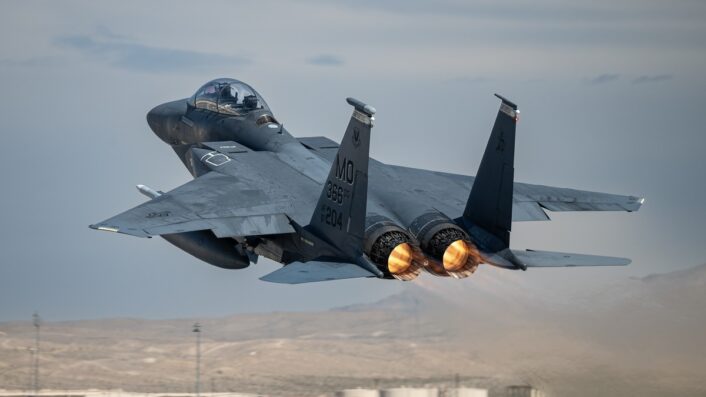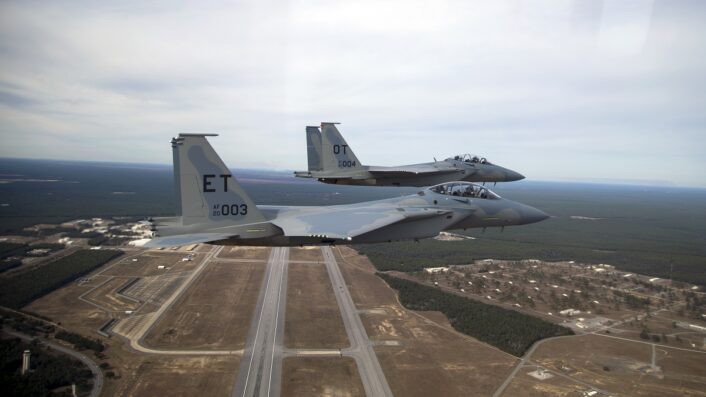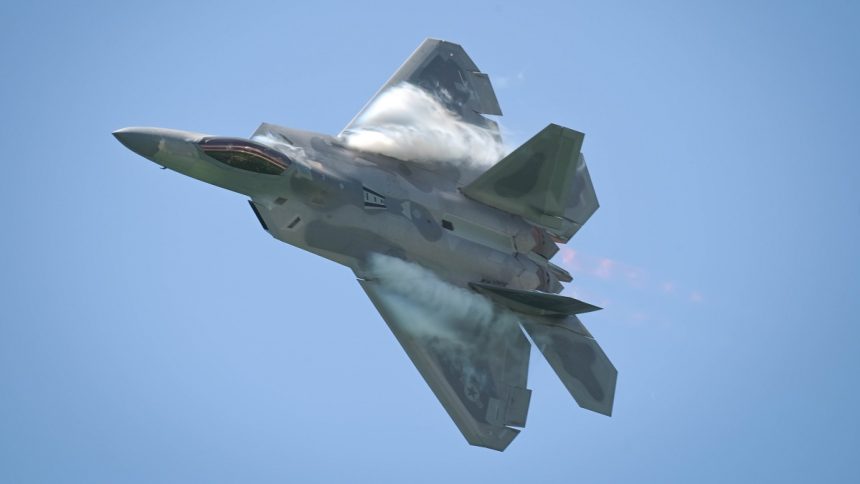The NDAA draft aims to block for the foreseeable future the divestment of the two aircraft, as well as increasing again the planned F-15EX fleet.
After the U.S. Air Force planned to retire 250 aircraft in 2025, including 32 F-22A Raptor and 26 F-15E Strike Eagle fighters, the House Armed Services Committee is proposing significant changes to the Air Force’s plans. The lawmakers, in fact, want to prevent the divestment of these tactical fighter jets as well as increase the F-15EX orders.
The divestment of the oldest airframes for both F-22 and F-15E fleets was proposed a couple of years ago, in an effort to optimize resources. The retirement of the oldest aircraft was decided because of the high costs that it would take to upgrade those fighters, so their retirement would free up resources to upgrade the rest of the two fleets.
Among the 250 aircraft to be retired are also 56 A-10, 65 F-15C/Ds and 11 F-16s, whose divestment appears to have been granted. Recently, it was also discovered that the Air Force is divesting its first B-2 Spirit stealth bomber, an airframe which was damaged in a 2022 incident and whose repairs have been deemed uneconomical.
Let’s now go with order and discuss the situation for each of the F-22, F-15E and F-15EX decisions.
F-22A Raptor
The Air Force first requested the approval to divest the oldest F-22s in 2022. The plan was to divest all but three Block 20 aircraft and send them to the “Boneyard” at Davis-Monthan AFB, Arizona, reducing the overall F-22 fleet from 186 to 153 aircraft.
Among the reasons behind this plan, the service listed the high costs that would be required to upgrade these 33 aircraft to an operational status. Maj. Gen. Peccia, then Air Force’s deputy assistant budget secretary, mentioned that an investment of USD 1.8 million over eight years would be required to upgrade these older F-22s.
It is worth noting that these older F-22s right now are only used for training, as the Block 20 has only basic air-to-ground capabilities, compared to more recent Blocks. The retirement of the oldest Raptors was also going to free up resources to upgrade the remainder of the F-22 fleet with new advanced sensors.
Shortly after this decision was announced, the FY23 National Defense Authorization Act blocked the divestment until FY27. Congressional staffers told reporters that the new FY25 NDAA intends to continue blocking the plan and keep those aircraft in service as they are still relevant for a future fight.

F-15E Strike Eagle
As we reported in the past, the F-15E Strike Eagle fighters currently in service have two different engines, specifically 119 F-15Es powered by the Pratt&Whitney F100-PW-220 turbofan and 99 powered by the F100-PW-229. The newer -229 engines have a thrust rating of 29,000 lb, while the older -220 stops to 23,500 lb.
The Air Force planned to divest all Strike Eagles with the -220 engine by FY28, shrinking the fleet from 218 to 99 aircraft, using the freed-up resources to upgrade those 99 aircraft. The FY24 NDAA already limited the number of aircraft that could be retired from 119 to 68.
The FY25 NDAA is going to prevent the divestment of all 119 aircraft from happening for the foreseeable future, according to lawmakers. This was explicitly written in the draft currently being discussed.
In fact, it can be read that the NDAA “would prohibit the retirement of any F-15E tactical fighter aircraft, with certain exceptions, until the Secretary of Defense submits a fighter aircraft capability and requirements study that estimates the number of fighter aircraft needed by the Air Force to meet the requirements of geographical combatant commanders”.
The NDAA further continues mentioning that the Secretary of Defense must brief the Congress on the report by Dec. 31, 2025, and the Secretary of the Air Force may not retire, prepare to retire, or place in storage or on backup aircraft inventory any F–15Es until a period of 180 days has elapsed following the date.
F-15EX Eagle II
As we reported earlier this year, the introduction into operational service of the F-15EX Eagle II is getting closer, as the first aircraft for an operational unit has flown and pilots are training for it. The new Eagle II is replacing a number of the legacy Eagles, with the 142nd Fighter Wing at Portland Air National Guard Base becoming the first operational F-15EX unit in fiscal year 2025.
The Air Force initially planned to acquire up to 144 F-15EX aircraft, however the number decreased to 104 last year. Now the number was reduced even more, with the FY 2025 budget request mentioning the Air Force will buy the last aircraft in 2025 and then end the production, capping the fleet at 98 aircraft.
The FY25 NDAA plans to revert also this decision, authorizing $ 271 million in advanced procurement spending for 24 additional aircraft to be added to the FY2026 budget, bringing the F-15EX fleet to 122 airframes. Whether these 24 aircraft will be in the new budget is yet to be seen.
Secretary of the Air Force Frank Kendall said earlier this year that the service has “some tough choices ahead” for 2026 because of constraints. The constraints likely refer to the Fiscal Responsibility Act which caps the budget at one percent growth, requiring some tradeoffs between the Air Force’s needs and the available resources.










